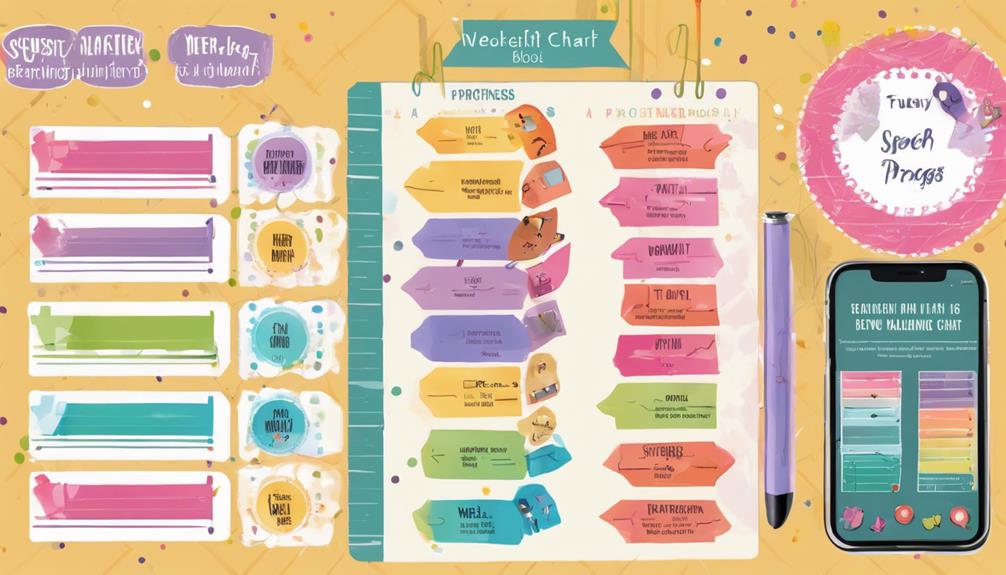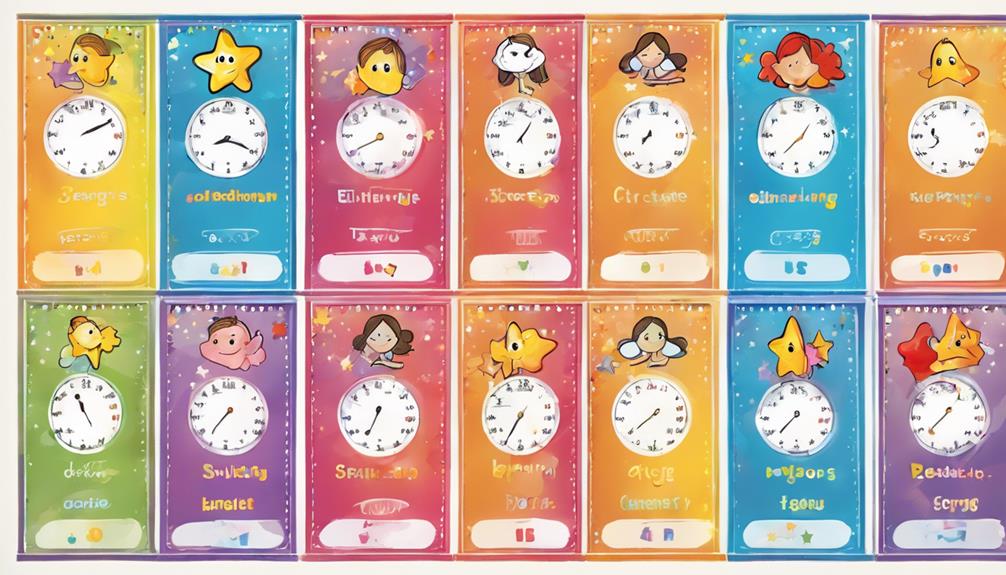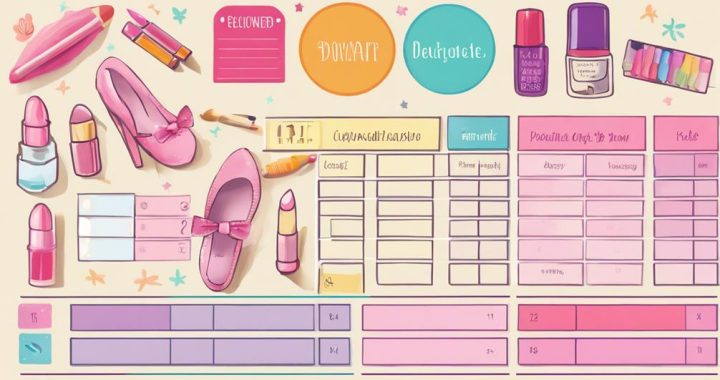To optimize behavior charts for sissy training success, guarantee clear expectations are set, covering dress, demeanor, tasks, and rules. Implement a systematic tracking method for data analysis and utilize visual aids like graphs for progress tracking. Design a structured reward system, tailoring rewards to specific behaviors and individual preferences. Regularly adjust training strategies based on feedback and progress, customizing approaches for individual differences. Enhancing chart design and strategic implementation will maximize sissy training effectiveness, leading to improved outcomes for behavior modification.
Importance of Behavior Charts

Behavior charts play a crucial role in sissy training success by providing a visual representation of progress and reinforcing desired behaviors through positive reinforcement. These charts are instrumental in increasing motivation by clearly outlining goals and tracking achievements.
When individuals see their progress visually represented, it serves as a powerful motivator to continue exhibiting positive behaviors. The act of filling in or receiving stickers on the chart acts as immediate reinforcement, reinforcing positive behaviors and encouraging their repetition.
Research supports the effectiveness of behavior charts in sissy training. A study published in the Journal of Applied Behavior Analysis found that using behavior charts notably increased the likelihood of individuals engaging in target behaviors. The visual nature of these charts provides a clear understanding of expectations and progress, aiding in reinforcement and motivation.
Setting Clear Expectations
Establishing explicit guidelines is vital for creating a foundation of understanding and accountability in sissy training. Clear communication is key in setting expectations for behavior. Clearly outline what's expected regarding dress, demeanor, tasks, and any specific rules or protocols. This clarity helps sissies understand what's required of them, minimizing confusion or ambiguity.
Consistent enforcement of these expectations is essential for sissy training success. Without consistency, sissies may struggle to understand the boundaries and consequences of their actions. Make sure that the guidelines are enforced uniformly and fairly. This helps sissies learn what behavior is acceptable and what's not, leading to improved compliance over time.
Tracking Progress Effectively
To effectively monitor the development and improvement of sissy training, implementing a systematic method for tracking progress is essential. Data analysis plays a vital role in this process. By collecting relevant data points such as completed tasks, adherence to guidelines, and skill mastery levels, you can gain valuable insights into the effectiveness of your training program.
Utilizing this data allows for a deeper understanding of trends, strengths, and areas needing improvement within the sissy training regimen.
Visual representation of the tracked progress can enhance comprehension and provide a clear overview of achievements and setbacks. Graphs, charts, or progress bars can visually display trends over time, making it easier to identify patterns and measure advancements.
Visual aids not only simplify complex data but also serve as motivational tools, allowing you to visually see the progress made and encouraging continued dedication to the training program.
Reward System Design
Designing a structured reward system is vital for reinforcing positive behaviors and incentivizing progress in sissy training. Positive reinforcement plays a pivotal role in behavior modification by encouraging desired actions through rewards.
When creating a reward system for sissy training, it's essential to contemplate the specific behaviors you want to reinforce and tailor the rewards accordingly. Rewards should be meaningful to the individual undergoing training, motivating them to continue displaying the desired behaviors.
Incorporating a variety of rewards can help maintain interest and engagement in the training process. Contemplate using a combination of tangible rewards, such as special treats or items, along with intangible rewards like praise and encouragement. This multi-faceted approach can cater to different preferences and increase the effectiveness of the reward system.
Furthermore, it's important to establish clear criteria for earning rewards to guarantee consistency and fairness. Clearly outlining the expectations and the corresponding rewards can help individuals understand what's required of them and stay motivated to achieve their goals.
Adjusting Strategies as Needed

Regularly evaluating and adjusting your sissy training strategies based on progress and feedback is necessary for optimizing effectiveness and achieving desired behavioral outcomes. To guarantee success in sissy training, it's essential to adopt a customized approach that considers individual differences and preferences.
By acknowledging that each sissy responds differently to various methods, you can tailor your strategies to suit their specific needs effectively. Flexibility in methods is key when adjusting your approach, as what works for one sissy may not be as effective for another.
Feedback plays an important role in determining the efficacy of your training strategies. By actively seeking input from your sissy and being open to making changes based on their responses, you can fine-tune your methods for better results.
It's important to remember that sissy training is a dynamic process, and what works initially may need modifications over time to maintain progress. By staying adaptable and willing to adjust your strategies as needed, you can optimize the training experience for both you and your sissy.
Frequently Asked Questions
How Can I Address Setbacks in Behavior Improvement?
When setbacks occur in behavior improvement, focus on overcoming resistance by building motivation. Manage setbacks by implementing reinforcements that support progress. Stay consistent, track progress, and adjust strategies as needed to maintain momentum and achieve long-term success.
What if My Sissy Resists Using the Behavior Chart?
If your sissy resists the behavior chart, try resistance management techniques like positive reinforcement and clear communication strategies. Motivation techniques such as rewards and praise can help encourage compliance and foster a positive training environment.
Can Behavior Charts Be Effective for Long-Term Training?
Behavior charts can be effective for long-term training. By monitoring progress and implementing motivation techniques, you can guarantee training progression. Consistent use of charts, coupled with positive reinforcement, fosters lasting behavioral changes in sissies.
How Do I Handle Privacy Concerns With Behavior Charts?
When addressing privacy boundaries with behavior charts, guarantee open communication with participants. Discuss concerns and establish clear guidelines. Implement strategies like using codes instead of personal information. Respect boundaries to maintain trust and effectiveness.
What Role Does Consistency Play in Behavior Chart Success?
Consistency is key in behavior chart success. Establish a routine for tracking progress and addressing behaviors consistently. Reinforcement impacts behavior positively when consistently applied. Maintain a steady approach to see lasting changes.
Conclusion
To sum up, behavior charts are a valuable tool for sissy training success. By setting clear expectations, tracking progress effectively, designing a reward system, and adjusting strategies as needed, individuals can optimize their training outcomes.
Utilizing behavior charts can help maintain motivation, provide structure, and encourage positive behavior change. With a well-designed approach, sissy training can be successful and fulfilling for both the trainer and the trainee.
